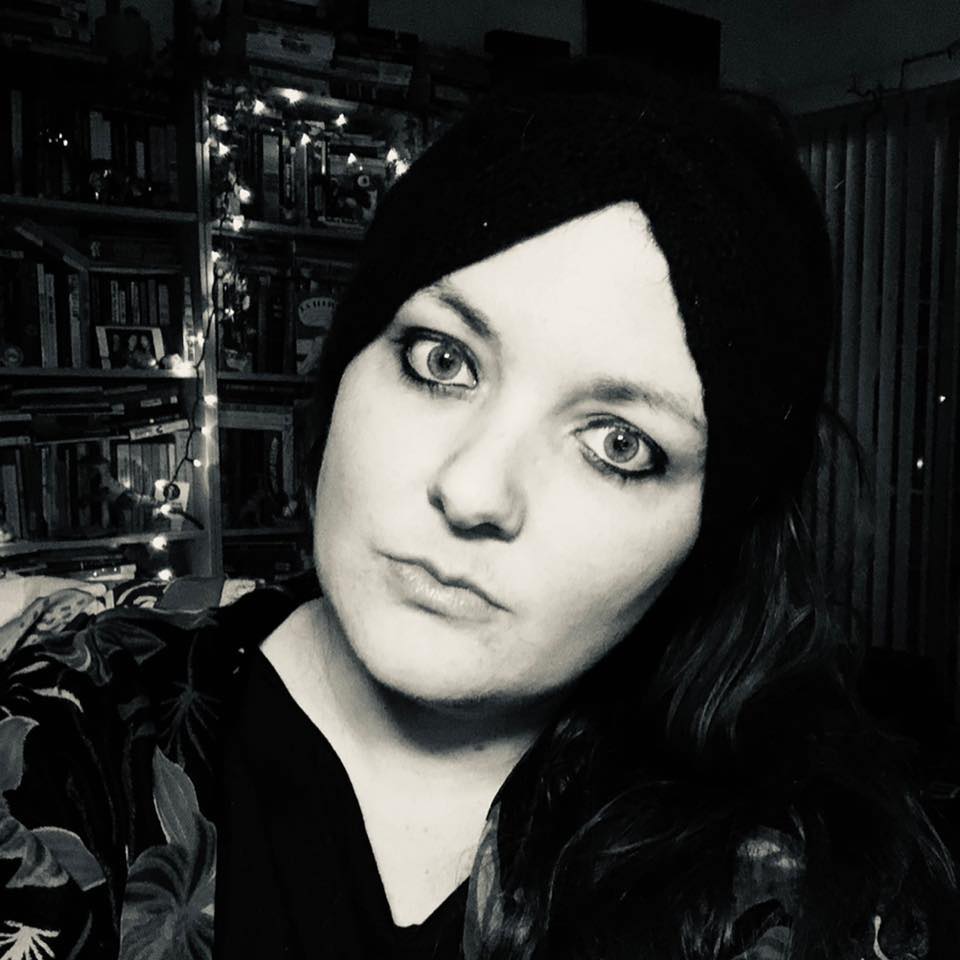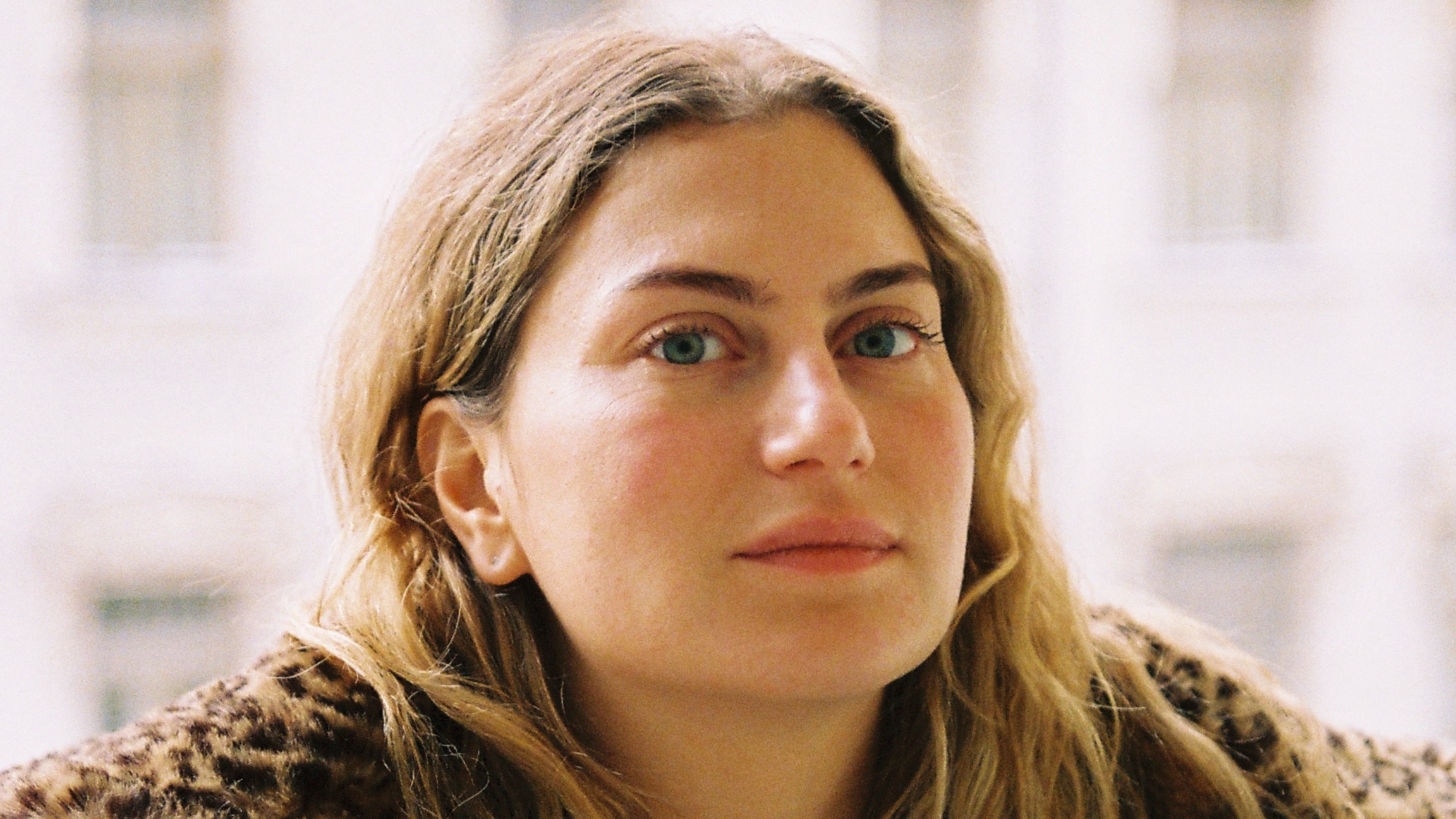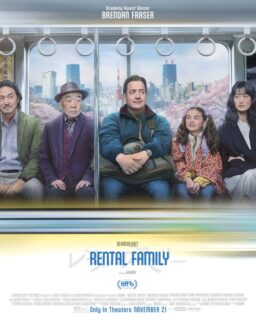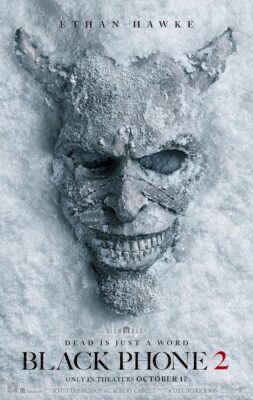Shot in dreamy, textured 16mm, the intimate and desire-filled Lithuanian film “Slow” is not your typical romance. Sparks fly when passionate contemporary dancer Elena (Greta Grinevičiūtė) meets ruminative sign language interpreter Dovyda (Kęstutis Cicėnas). Their chemistry is so immediate and so intense, Elena tells her friends she feels like they’ve known each other forever. Despite their undeniable compatibility, their burgeoning relationship hits a speed bump when Dovydas tells her he is asexual but would still like to pursue a romantic relationship with her. For Elena, who feeds on the electricity of flirtation and sexual arousal, this proves to be a difficult concept for her to fully comprehend. And as the two build their own kind of intimacy, it may prove to be one hurdle they cannot overcome.
For her delicate, character-driven work on the film, writer-director Marija Kavtaradzė won the Directing award after the film’s premiere as part of the World Cinema Dramatic Competition at Sundance back in 2023. In my capsule review out of Sundance that year, I praised Kavtaradzė’s careful use of close-ups, which, working in tandem with the immediate and intimate chemistry between Grinevičiūtė and Cicėnas, reminds us, “what it looks like when two perfectly matched stars ignite cinematic magic.” Having seen the film three times now, I remain in awe of what they accomplished together.
Born in Vilnius, Lithuania, Kavtaradzė studied filmmaking at the Lithuanian Academy of Music and Theatre. Several of the short films she made while in school were selected for the Vilnius International Film Festival. Working as a screenwriter along with co-writers Teklė Kavtaradzė and Andrius Blaževičius she wrote the social drama “The Saint” and dramatic thriller “Runner.” Her first feature film as a director, “Summer Survivors,” premiered at the 2018 Toronto International Film Festival. Over the years, Kavtaradzė has worked closely with rising Lithuanian film producer Marija Razgutė, who has produced both of Kavtaradzė’s feature films.
For this month’s Female Filmmakers in Focus column, RogerEbert.com spoke to Kavtaradzė over Zoom about the gradual process of crafting intimacy between actors, the tactile way 16mm photographs bodies, and presenting a complex portrayal of asexuality.

I first saw your film at the Sundance premiere but also at the Karlovy Vary Film Festival, which was its European premiere, so I think I saw it at both its major premieres.
You needed to come to the national premiere! [Laughs]
One of the main things that is so dynamic about this film is the chemistry you got from the leads. I know you cast them while you were still working on the script. What was the process to keep building these characters and building on that chemistry with the actors?
We became friends and became closer. Before I cast them, I knew both of them separately, but we were not friends. We had a good relationship, but we were not that close. They didn’t know each other at all, really. They knew of each other because it’s a very small country and they are both in theater. We talked about the screenplay when we met because there were always changes. I would send them new versions, and we would talk about it, read some scenes, or try to do some improvisations.
In the beginning, in the first years, it was more just talking and analyzing. After we finished filming, Kestutis, the main actor, said in the beginning he thought it was such bullshit that we were meeting and talking because he doesn’t always trust that kind of slow process. But in the end, he said it worked [laughs]. I think you have to trust the timeline and not hurry.
Before the production, we shot the teaser. And before we shot the teaser, we would rehearse certain scenes. We also took some sign language classes. This was right before the start of the pandemic and then during the quarantine, so we were doing this online. So from that time, we just started spending more and more time together.
You’ve cited the “Before” series as an inspiration in terms of how conversation the film is. How much was conversation a factor in the rehearsal or improvisation process during rehearsals?
I like some sort of improvisation, but I feel more comfortable improvising when we already know the scene really well. What I mean by that is that I don’t really like improvising the dialogue. Sometimes, we would rehearse scenes, and I would want to see some kind of a conflict, so I would give them certain goals that the characters have and have them try it without dialogue.
But for me, improvisation usually doesn’t really work. Because of the way I write characters, I can feel really quickly if they are talking in different styles of language. We shot a few improvisational scenes in the production, and I had the editor try to put them in the film. And I just couldn’t get over the fact that I could really see that these are not the characters, but the actors. I think that was partly because all the other scenes are written so the characters talk a certain way, and when they improvise, the text changes.
The film is about crafting an almost non-sexual intimacy, though there are some sexual scenes in which you worked with an intimacy coordinator. I’d love to hear your thoughts on both kinds of intimacy and how you brought them into the film.
I really wanted to have an intimacy coordinator from the beginning. Well, not from the beginning because I didn’t even know there was such a role when I started writing. When I heard about the role, I knew I wanted to work with one because our scenes are quite difficult. Some sex scenes are way easier in a choreographic way, and I had written them really detailed. But having the coordinator helped me not to worry too much, because I knew the actors were taken care of and everything was controlled. Then, we could just concentrate on what the characters felt in those scenes. If I didn’t have the coordinator, I would have worried half of the time, wondering if everything was fine with the actors or if they were uncomfortable. So that was really helpful.
I totally agree that the even more intimate scenes are not the ones we had to film with the coordinator, or because the most intimate scenes for me were the ones where they’re just laying down in bed and touching their cheeks. I think those scenes bring more romance and more actual intimacy. In the sex scenes that we have, the characters are not connected during that. They’re way more separated.
And actually, even filming these very, very tender scenes that are not sexual at all, for me, it was, in some ways even a bit harder because we did need even more vulnerability from me and the actors. When filming sex scenes, it’s a closed set, and there are fewer people, but filming these intimate scenes, everyone is there while we’re trying to focus. And for these scenes, you have to be very, very open because nothing is happening; they’re just very tender. In some ways, it feels like you need more courage to do that.
One of my favorite scenes is when they’re in the crowded bar, and he’s walking kind of backwards, and they’re kind of mirror dancing with each other. It’s just so beautiful and truly intimate, even though they’re surrounded by people. What was the genesis of that scene?
I really wanted that feeling of being with many people, maybe, but you still are very much just together. When I wrote that scene, I wrote that she was copying his movement because she didn’t want to dance, but there was nothing in the screenplay about the mirror. But I knew I wanted to shoot in that bar, and when we went to scout the location, the cinematographer was like, “Oh, we’ll shoot, so see just him in the mirror?” And I said, yeah. [Laughs]. Everything felt like it had to be shot like that. It made sense. We don’t need more shots. We just see him and her and everything in that one shot.
In the screenplay, it seemed like such a short scene, but it became bigger when we filmed it. We shot it at the beginning of the second week, so maybe shooting day number six or seven. It was one of those scenes where you shoot it, and then afterward you realize something more about the film, so it’s easier to go further. The actor also felt that there was something special in this scene.

I probably listened to that April Snow song probably 100 times last year. It was on my playlist for the year. How did the music come together for the film?
We had Swedish co-producers, and we knew we wanted to work with composers from Sweden. So our co-producer sent me a very long list of Swedish composers, and I listened to a lot of them, but she was one of the first ones that I listened to, and I would keep coming back to her. You know, I kept coming back and listening to her. Because her style and her voice were very special. It’s so very romantic. It’s just very beautiful music, but also it’s very specific. When you listen to her songs, you can really tell it’s unique to her. I like that because sometimes when I listen to a lot of music made by composers, everything kind of starts to sound a bit similar because there is film music and then music. She brings a lot of the mood with her. I generally like to work with other artists who bring their own style. Instead of working with someone who can do whatever you want. So, her music really shaped the film in some way. Colored it.
I feel her music has that same ethereal feeling that the 16mm brings, that same texture. I’ve seen this film three times now, both on the big screen and on my laptop, and what is so great about 16mm is the film never loses that texture. That said, on the big screen, I was like, in another world, it’s just so beautiful. Your cinematographer, Laurynas Bareisa, has spoken about being inspired by Nan Goldin, which I totally feel. When did you realize you wanted to shoot on 16mm?
That was very early in the process. My DP came on board while I was still writing; I didn’t even have the first draft. I had just started working on the screenplay but felt so strongly that it had to be shot on 16mm. When I told him I wanted to shoot on film, he was like, “well, we can try.” We never had experience shooting on film before. I hadn’t. He hadn’t. But our camera operator had a lot of experience with film. So our camera operator encouraged me a lot because I was a bit scared. I thought maybe it was too expensive. I wasn’t sure we could pull it off.
But the more we worked, the more 16mm made sense. First of all, because of the topic and how we wanted to see bodies and portray bodies. I think it would have been way harder to do with film with digital because we really wanted to see textures that are natural and the colors that are natural. We always like working with as much natural light as possible. There’s nothing original, in general, about working with 16mm. It’s now very much a trend, and I’m aware of that. It’s not that special in some ways, but I really felt like that this is the right thing for this film.
Filmmakers, and especially cinematographers, always say that you have to shoot on film at some point in your lives. I didn’t have that, let’s say, dream. For this film, it felt right. We tried doing some tests. As I said, we shot a teaser on 16mm. Then, when I saw how it looked, I realized there was no way of coming back from that. It would have been impossible because it looked so good. We were shooting the dance, the romantic conversations while they walked, and so on, and it was like, there is no way we are going back to digital after that.
Elena often wears bright yellow-green. She has it in her sports bra, a pair of leggings, and even her purse. It really shows what a vibrant person she is, even though she hides the vibrance sometimes by wearing a lot of neutrals. She always has that bright accent. How did you come up with that color for her?
From my work with Fausta Naujale, the costume designer. I really love this process and our collaborations. This is maybe our third film together, so she knows my taste very well. It’s very easy. I really like spending a lot of fun in the fittings and seeing what works for the character. That brings me a lot of clarity about the characters. Also, then we talk with the actors about how they feel in the costumes.
This color definitely came from the fittings, but it’s also very much a sport color. I really like that we have these accents on her because the main color palette that I talked about with my art designer was very much nude body colors, skin tones, and so on. Then, it looked even better to have that little accent on her.
That same color was brought into the poster, too.
We even had a dress code at the national premiere. So, the people who came had to wear that color.

I love that. I wanted to ask about Dovydas eating sandwiches. I think he eats sandwiches in like four different scenes. Even when he’s run off and angry at the end, he’s still eating a sandwich, which felt very real to me. How did you come to this character trait for him?
In very early versions of the screenplay, I had one detail that Elena almost never eats when they’re together because she’s self-conscious. We can still see that now from the scene with her mom. We have less of that in the final version of the film, but the sandwiches stayed for him. I don’t know why, but for that character, it works. And Kęstutis, the actor, was so happy. He would ask the art department for some sandwiches before we were filming. They would say, “No, because you will not eat later when you have to for the scene.” And he’s like, “This is not going to be a problem.” He ate so many sandwiches.
The sandwiches looked really good. It’s a hell of a sandwich movie. I also wanted to ask about his job as an interpreter. Translation is a big part of what he does. Elena, as a dancer, also kind of translates feelings into motion. So, I’d love to hear your thoughts on how translation is a big part of both of their lives in this film.
This came very intuitively in the beginning. One of the first things that I knew about the story was their meet-cute moment and how it will look. I knew that he was an interpreter and she was a dancer. Then again, shooting on 16mm revealed so much. They are both working with their bodies. Yes, they are translating as you say, and I would also say that while doing their jobs, they feel the most safe.
Dovydas is at his most vulnerable when he’s interpreting the songs because the song interpretation is very poetic. He has to show a lot of emotion because it’s a part of the language. Otherwise, you won’t understand the song. To translate a song, you also have to show the tempo, all the emotions, and the tone of the song. He’s good at it, but he has to be vulnerable. So he’s even more open when he does that. And Elena is very much herself when she dances.
I like the idea that the characters know what they’re doing professionally. They may be a little confused in the relationship and have their issues. But in professional settings they know what they are doing. They’re good at what they’re doing. They like what they’re doing. Often in romance films, especially with female characters, you have a woman who is free and looking for certain things, but she’s lost in all the parts of her life. So in this film, I really liked that in her work she knows exactly what she’s doing and she’s good at it.
Obviously, Dovydas is asexual, and I had read that the only version of asexuality you’d seen in media was a character in “BoJack Horseman.” Is that where you first got the idea?
The first time I heard about asexuality was when I read an article or something online. But the first time I’d seen a character in TV or film, for sure that was the first time I saw that. But since I first read about it, it has really stayed with me. I didn’t have a story at first. I researched it a little bit. But I didn’t know a lot. When I came up with the idea that it would be a love story and a romance, then I actually started doing real research on the topic. It was one of these topics that you get interested in, and then it survives the test of time. And you ask if you are still really interested in it. And I was still interested in their story and the characters and how to properly represent this topic. It’s tricky, and I did have a lot of dilemmas and moral questions about your presentation. I thought, if I do that, then how should I approach it?

I really liked that you showed that you can be asexual and still be romantic. Like, because asexual isn’t the same thing as aromantic. I think the difference confuses a lot of people. I think it’s confusing for Elena because she doesn’t understand those things aren’t necessarily the same. Was that something you were hoping to sort of show with this character?
I wanted this character to be sex neutral. I think that’s interesting. Often, you’ll get the very opposite end, where the character is sex repulsed or aromantic. I wanted him to be confusing for her, of course, and she is critiqued because she is really ignorant at times. But in a human way. I understand her because, for her, it’s hard not to take this personally. But it’s very childish and not mature. But I’m not interested in writing perfect characters. They both have aspects of themselves that they should work on more if they want to. Aspects of their relationship that they can work on.
I love that the film shows that it takes work on both of their parts and maybe they don’t have the ability to work further. I think that’s a very mature way to end a relationship—a very mature way to show that sometimes you hit a wall and you just can’t pass it. I love that about the film.
What’s really interesting is that it’s usually about 50-50, with parts of the audience who think that they stay together at the end and parts of the audience who think that they break up.
Are there any female filmmakers whose films have either inspired you or that you just think more people should watch?
The first filmmaker that comes to my mind is Carla Simón.
She made “Summer 1993.” I love that film.
And “Alcarràs.” I’ve also seen some of her short films. I admire her a lot. Growing up, I really admired Agnès Varda, not only creatively but also as a person. I’ve seen her films, but from what I have read about her, I think she’s one of the best sources of wisdom for filmmaking and life. I was really mesmerized by Catherine Breillat when I was pretty young. I hadn’t seen anything like that before. Also, Céline Sciamma.












